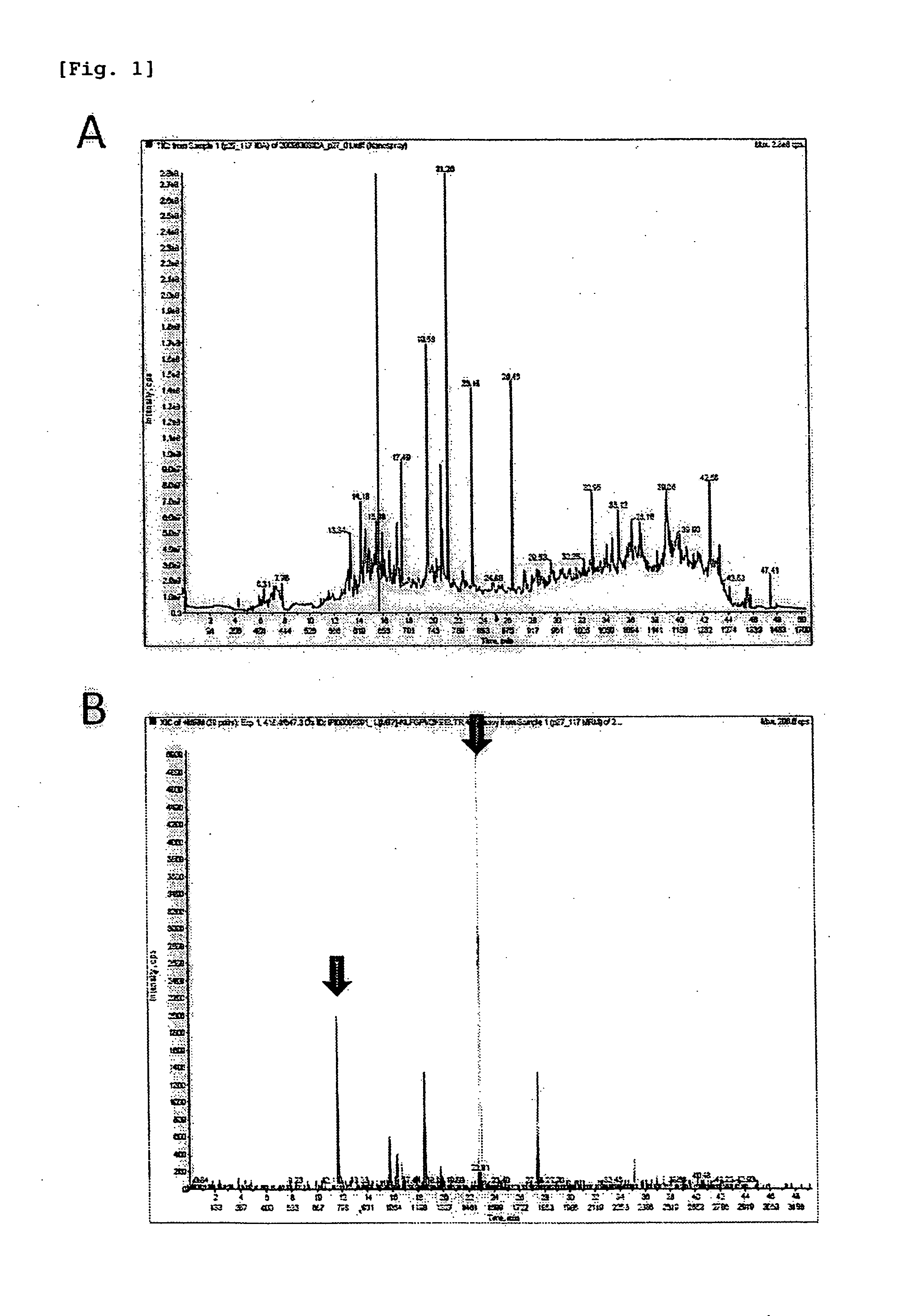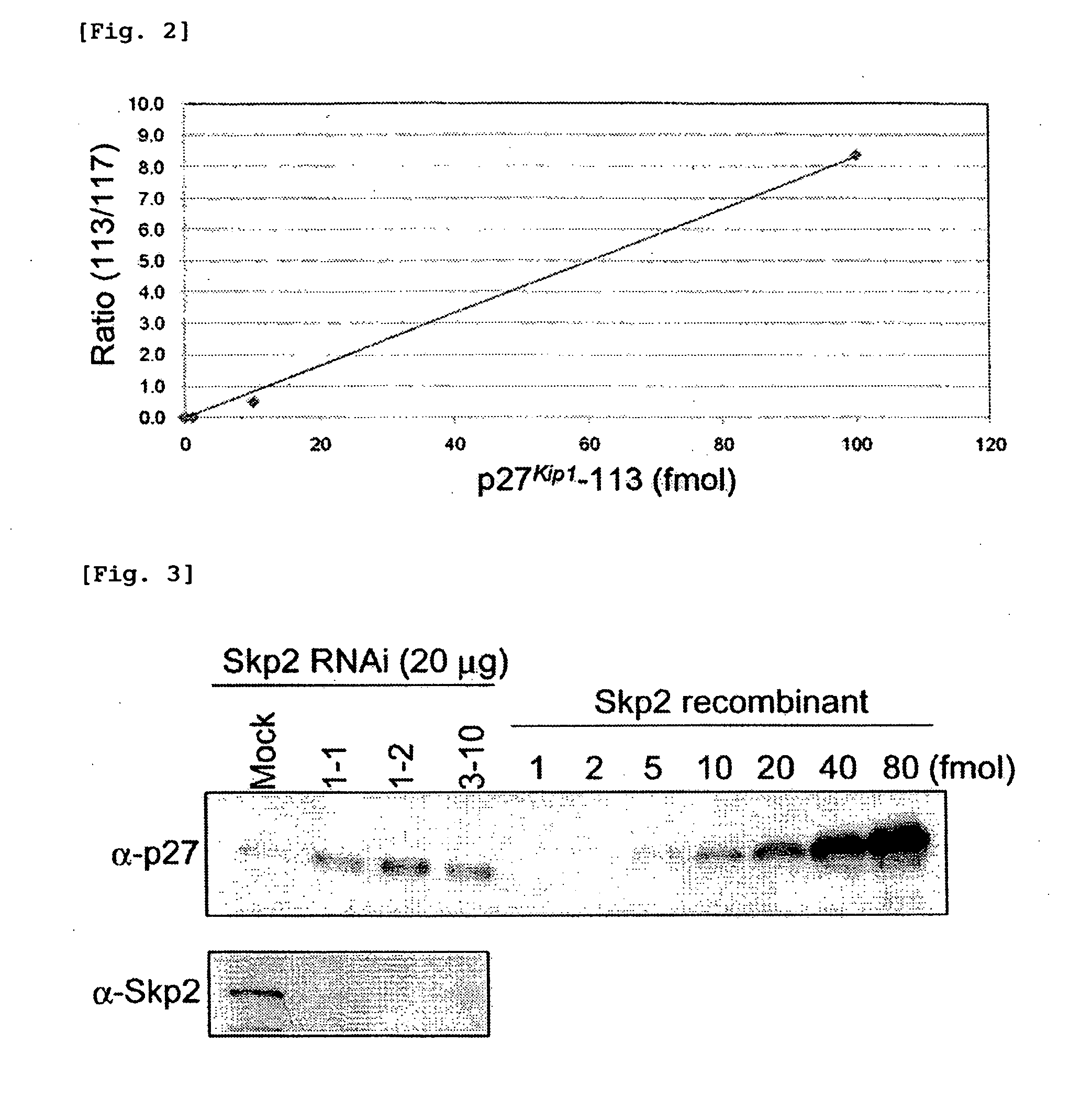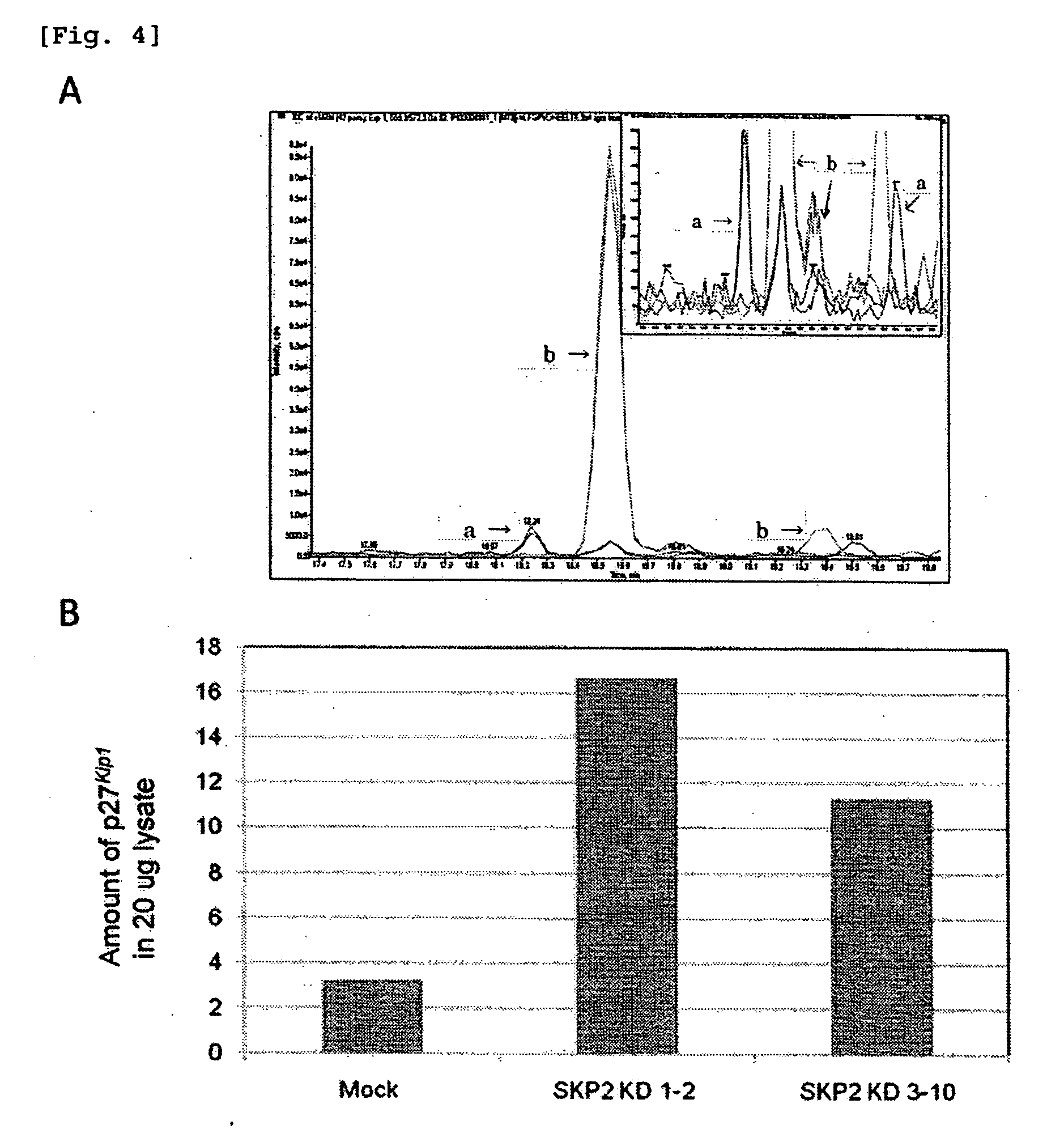Method for quantifying protein
a protein and monitoring technology, applied in the field of multiple reaction monitoring, can solve the problems of insufficient practical use of a single technique, substantial inability to comprehensively analyze, and difficulty in detecting trace proteins
- Summary
- Abstract
- Description
- Claims
- Application Information
AI Technical Summary
Benefits of technology
Problems solved by technology
Method used
Image
Examples
example 1
Selection of MRM Transitions Using PFTS, and Preparation of Calibration Curve
[0078](1.) Preparation of Recombinant Human Cyclin-Dependent Kinase Inhibitor Protein (Recombinant p27Kip1) Using cDNA
[0079]cDNA of p27Kip1, which is a human cyclin-dependent kinase inhibitor protein, was incorporated into a pGEX-6P1 E. coli expression vector, and expressed as a GST-fusion protein in E. coli. Subsequently, the GST-fused p27Kip1 was bound to Glutathione Sepharose, and the GST moiety was cleaved and eluted by treatment with PreScission Protease (produced by GE Healthcare). The thus-obtained recombinant p27Kip1 was subjected to electrophoresis to measure the purity and the concentration.
(2) Enzyme Treatment (Digestion) of Recombinant p27Kip1
[0080]The purified p27Kip1 (600 ng) prepared above was dissolved in 100 μl of 100 mM Tris-HCl (pH 8.5) containing 7M guanidine hydrochloride, and incubated at 86° C. for 1 hour. After quenching, the resulting solution was mixed with an equal amount of 100 ...
example 2
Absolute Quantification of Endogenous Proteins by the MRM Method
(1) Preparation of Endogenous Proteins
[0095]Using Skp2 protein-encoding gene-knockdown HeLa cells (Skp2 KD 1-2 cells and Skp2 KD 3-10 cells), and control cells (Mock) as starting materials, cell extracts were prepared. The Skp2 protein is a ubiquitination enzyme of p27Kip1 (a human cyclin-dependent kinase inhibitor protein) prepared in Example 1.
[0096]A decrease of the Skp2 protein in the cells by knockdown (FIG. 3, lower portion) and accumulation of p27Kip1 thereby (FIG. 3, upper portion) were confirmed by western blotting. FIG. 3 shows the results. The amount of p27Kip1 present in 20 μg of each extract was estimated. It was confirmed that the amount of p27Kip1 in the control cells (Mock) was 3 fmol; the amount of p27Kip1 in the knockdown cells (Skp2 KD 1-2 cells) was 20 fmol; and the amount of p27Kip1 in the knockdown cells (Skp2 KD 3-10 cells) was 10 fmol.
(2) Enzyme Treatment (Digestion)
[0097]After 100 μg each of the...
PUM
| Property | Measurement | Unit |
|---|---|---|
| pH | aaaaa | aaaaa |
| temperature | aaaaa | aaaaa |
| retention time | aaaaa | aaaaa |
Abstract
Description
Claims
Application Information
 Login to View More
Login to View More - R&D
- Intellectual Property
- Life Sciences
- Materials
- Tech Scout
- Unparalleled Data Quality
- Higher Quality Content
- 60% Fewer Hallucinations
Browse by: Latest US Patents, China's latest patents, Technical Efficacy Thesaurus, Application Domain, Technology Topic, Popular Technical Reports.
© 2025 PatSnap. All rights reserved.Legal|Privacy policy|Modern Slavery Act Transparency Statement|Sitemap|About US| Contact US: help@patsnap.com



